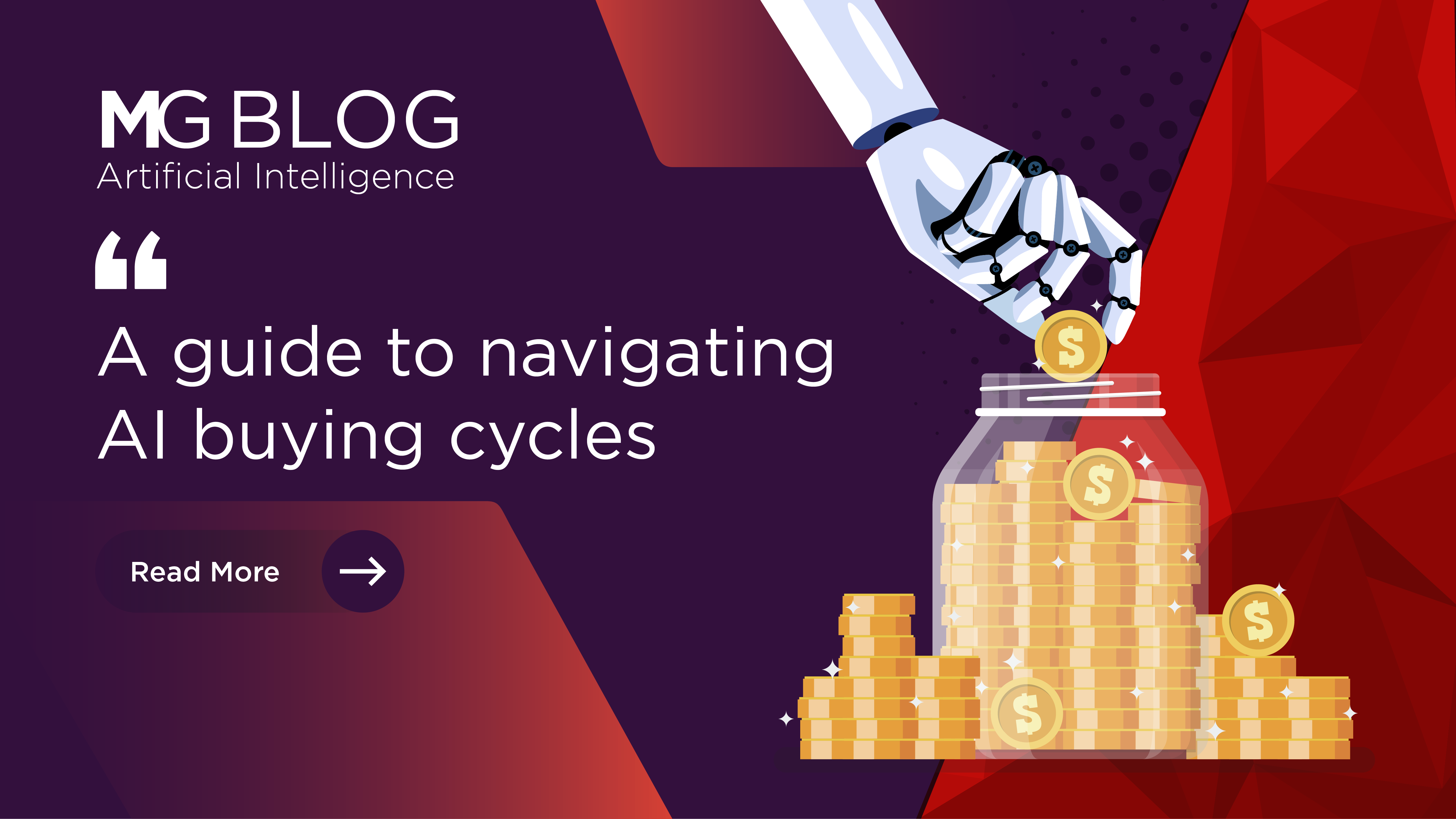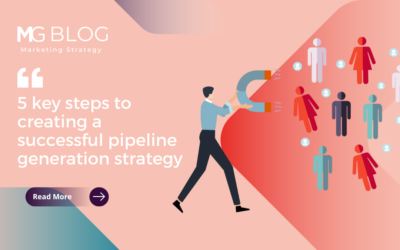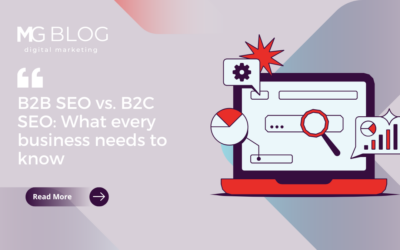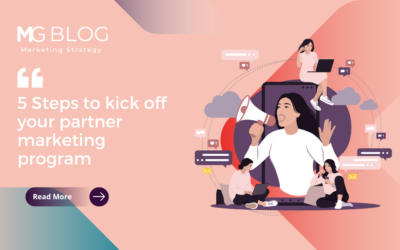This blog is the third in a series of posts examining MG Labs’ 2024 State of Generative AI Use and Impact Report and its implications for both AI marketers and PR professionals. Follow the links to read blogs one and two.
Over the last two years, Generative AI (GenAI) breakthroughs have helped AI technologies leap from the pages of science fiction to the top of boardroom agendas. Business leaders are eager to explore how AI can transform their workforce’s productivity levels, the service they provide to customers, and overall company performance. The heightened excitement surrounding AI continues to drive rapid growth in vendor solution offerings. In fact, Bloomberg estimates that the GenAI market will skyrocket to $1.3 trillion by 2032 at a compound annual growth rate of 43%.
However, significant market growth also comes with increased competition. Emerging startups and storied technology brands are vying for their share of the market and enterprise investments in AI. In this competitive landscape, marketing and PR professionals representing AI companies become even more essential to helping their organizations stand out from the crowd and reach the right buying personas.
In June, we published the 2024 State of Generative AI Use and Impact Report, based on a study with multi-service content agency We Are Talker. The study surveyed 200 senior-level tech-purchasing decision-makers in executive leadership, marketing, IT/operations, security, and finance/accounting at well-funded, late-stage startups and global corporations in the United States. The findings offer valuable insights for marketers and PR professionals as they tailor their strategies to reach AI buyers.
Leave AI Buying to IT
Understanding target audiences and ultimately buyer behavior remains the key to a successful communications strategy. As the AI landscape becomes increasingly saturated, marketing and PR pros must understand who makes the AI purchasing decisions within an organization and identify ways to educate and influence these individuals.
Our research study shows that nearly 7 in 10 (68.5%) respondents say their IT departments play the most significant role in AI purchasing decisions. This revelation challenges previous notions that individual business units, like finance or operations, hold the purchasing power over all tech investments. In fact, less than a quarter of respondents (24.5%) indicate that these aforementioned departments still hold the AI purse strings within their organizations.
Marketing and PR professionals have an opportunity to reposition their brand messaging to resonate with IT decision-makers. Here’s how to do it:
- Start by connecting new use cases with an organization’s business strategy
- Then, build a business case that underscores your solution’s ROI and costs of implementation
- Showcase established governance and risk frameworks to guide responsible AI use
- Next, communicate how you foster a culture of innovation while nurturing company-wide trust and adoption of AI technologies
- Emphasize how AI can upskill existing workforces and attract emerging talent
- Validate your data quality with solid infrastructure and processes for AI model training
- Integrate proactive cybersecurity standards to prevent threat actors from compromising system integrity
Delivering differentiated content, such as thought leadership and branded materials, helps address the concerns and priorities of decision-makers at every stage of the buying journey. It demonstrates that PR pros and marketers know what they need and speak their language.
Break Through the AI Noise
Understanding who holds the AI purse strings is just one part of the equation. It’s critical to know where CIOs and CTOs gather information about AI and what content they seek to inform their purchasing decisions. Over half of our respondents name webinars and videos as their primary channels for acquiring information about AI tools. Vendor websites (49%), events and conferences (48.5%) and social media (45.5%) closely follow, reinforcing the growing demand for educational content about AI that’s both interactive and visual.
Marketers and PR pros can consider paid opportunities with well-regarded channels, such as by co-hosting a webinar with an esteemed analyst firm, a leading technology publication, or a widely read outlet in the buyers’ target vertical industries. In addition to being a lead-generation tool through registrations for the live webcast, webinars can provide continuing value as on-demand video and shorter clips used on social media to engage, educate, and nurture AI buyers.
PR pros can drive greater awareness of their company’s value proposition by incorporating brief explainer videos to accompany press announcements that provide an additional visual reference for upcoming product launches. And the data agrees. A recent report from earned media software company Cision shows press releases that feature multimedia content garner up to three times more views as they capture the attention of both reporters and their readers alike. After all, seeing is believing—and in PR, it also makes your story more compelling.
Keep the AI Message Simple, Yet Substantive
With so much buzz surrounding AI, it’s easy to get lost in the shuffle of endless conversations. Our survey shows that when it comes to AI, information overload is real. Yet nearly one in three respondents (27%) say they are most interested in general AI trends for business, which emphasizes the growing need for basic education surrounding the rapidly evolving field of AI.
Brands can distinguish themselves as industry leaders and informational resources for AI buyers by providing repositories of AI thought leadership content and curated news that’s both unbiased and uncomplicated. Having a finger on the pulse of AI innovation will enable brands to establish credibility and fortify trust with potential buyers when it comes time to purchase.
When you know who to reach, it becomes easier to speak to their needs with content that resonates, establishes trust and leads to purchasing conversations. For marketers and PR pros looking to connect with AI buyers, that means offering IT decision-makers relevant, engaging content that demonstrates you’re on the cutting edge of GenAI trends shaping the future.
Stay tuned next week for part four of our blog series, where John Conrad, Executive Vice President and Senior Partner of Merritt Group, examines the top use cases for GenAI in the workplace.
Be sure to download our 2024 State of Generative AI Use and Impact Report for our full research and findings on AI adoption, buying cycles and purchasing decision dynamics.




